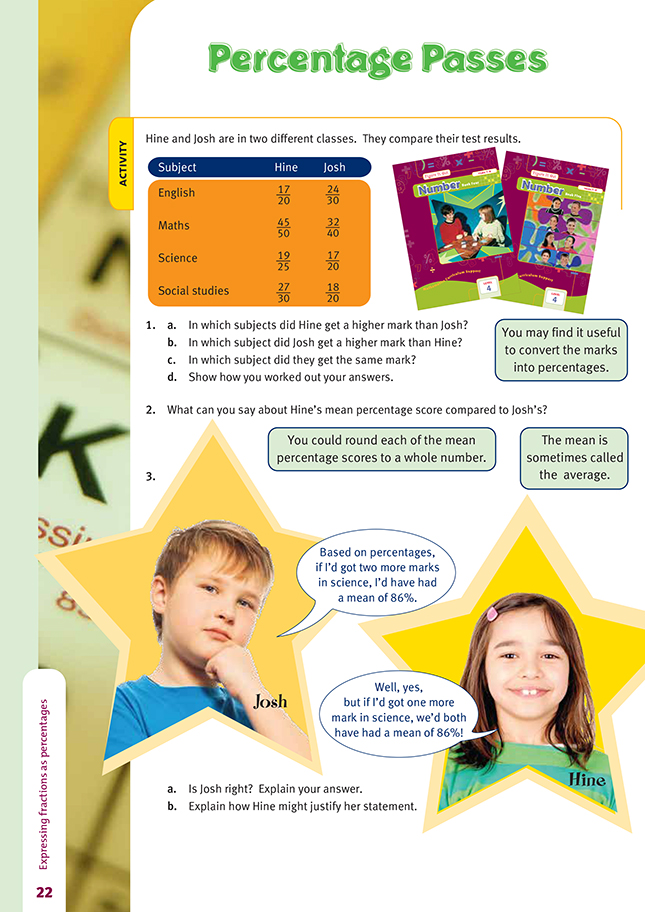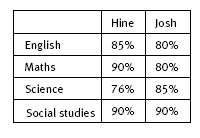This is a level 4 number link activity from the Figure It Out series. It relates to Stage 7 of the Number Framework.
A PDF of the student activity is included.
Click on the image to enlarge it. Click again to close. Download PDF (355 KB)
convert fractions to percentages
find mean of a set of numbers
FIO, Link, Number, Book Five, Percentage Passes, page 22
Question 1 asks the students to compare fractions that have different denominators. The students will find these difficult to compare unless they convert the marks to percentages, as is suggested in the hint given on the page in the students’ book, or convert the marks to fractions with the same denominator.
Percentages are just decimals expressed as a fraction of 100. Thus, taking Hine’s English mark of 17 out of 20 as an example, the students can use a calculator to find what 17/20 is as a decimal (it is 0.85) and then look at this as a fraction of 100 (it is 85/100 ), which in turn is 85 percent. With calculators that have a % button
(and most do), the students can key in 17 ÷ 20 % and get 85 immediately.
Alternatively, the students could use the identity principle to convert the marks to fractions with the same denominator. For example, 17/20 =/100 becomes 17/20 x 5/5 = 85/100. Encourage the students to use this approach because:
i. it helps them to see that percent really does mean “per hundred”;
ii. it enables many of the tasks in this activity to be done mentally (probably all those except the marks out of 30; even out of 40 is not too tough as there are 21/2 lots of 40 in 100, so 21/2 lots of 32 will give the appropriate percentage);
iii. it helps develop good number sense.
You may wish to discuss with the students whether Hine’s and Josh’s mean percentage marks should be rounded to whole numbers (85.25 to 85, and 83.75 to 84 respectively). The students may be able to come up with examples of situations where a mean may quite realistically not be a whole number.
In question 3, the students need to recalculate the science percentages and also the mean percentages for each person. Part of the problem solving that is required involves the students working out that this recalculating is what they need to do.
Answers to Activity
1. a. English and maths
b. Science
c. Social studies
d. A table is one way of comparing results:
2. Hine’s mean percentage score is 85.25% (or 85% rounded to the nearest whole number), and Josh’s is 83.75% (or 84% rounded). So Hine scored 1.5% more than Josh (or 2% rounded). (It could have been more accurate and important to use the
unrounded scores if the difference had been less than 1%.)
3. a. Yes. 19/20 is 95%. His mean would then be 86% (rounded).
b. Hine realised that a science mark of 20/25 would give her 80% in that subject instead of 76%. This would give her a total of 345, a mean of 86% (rounded).

